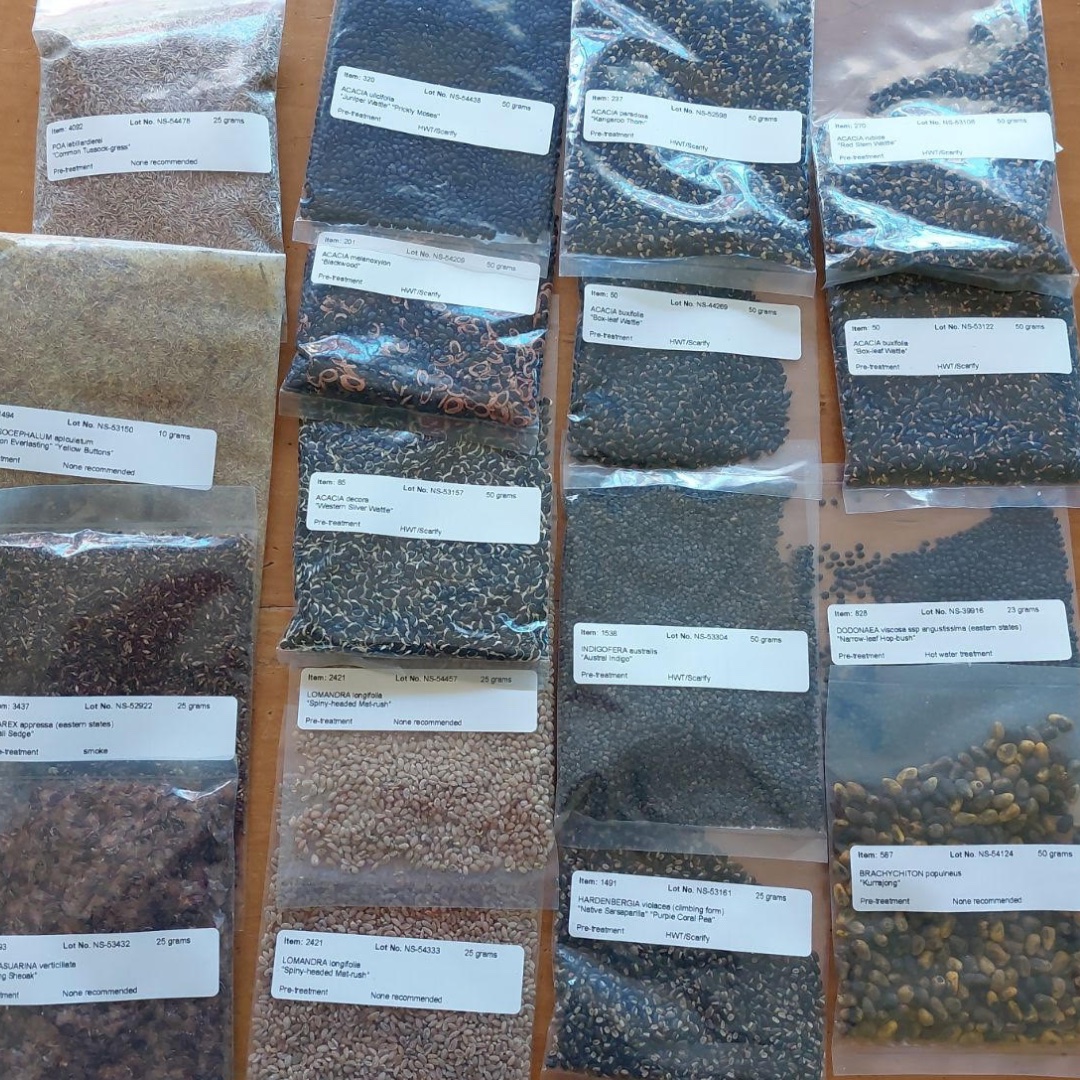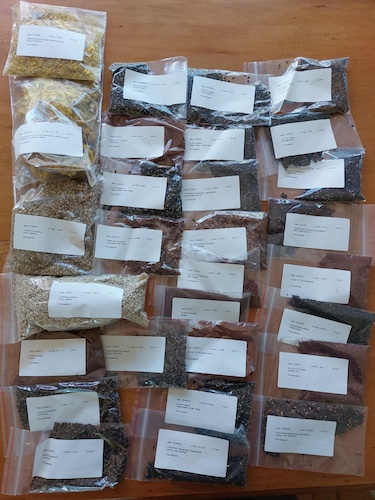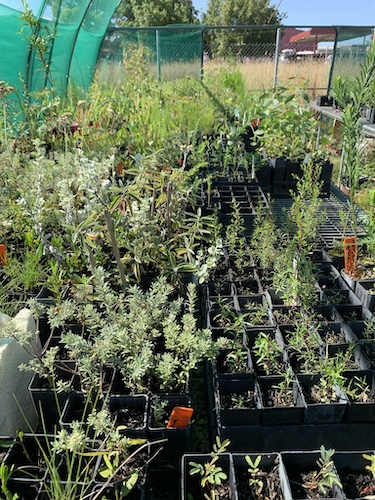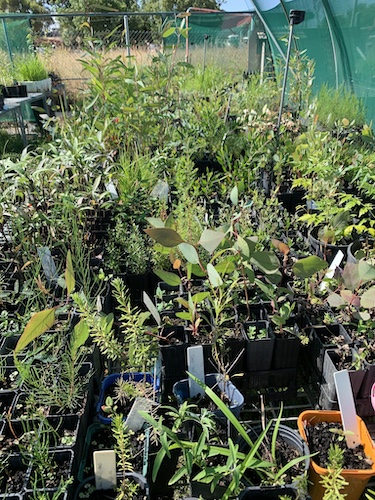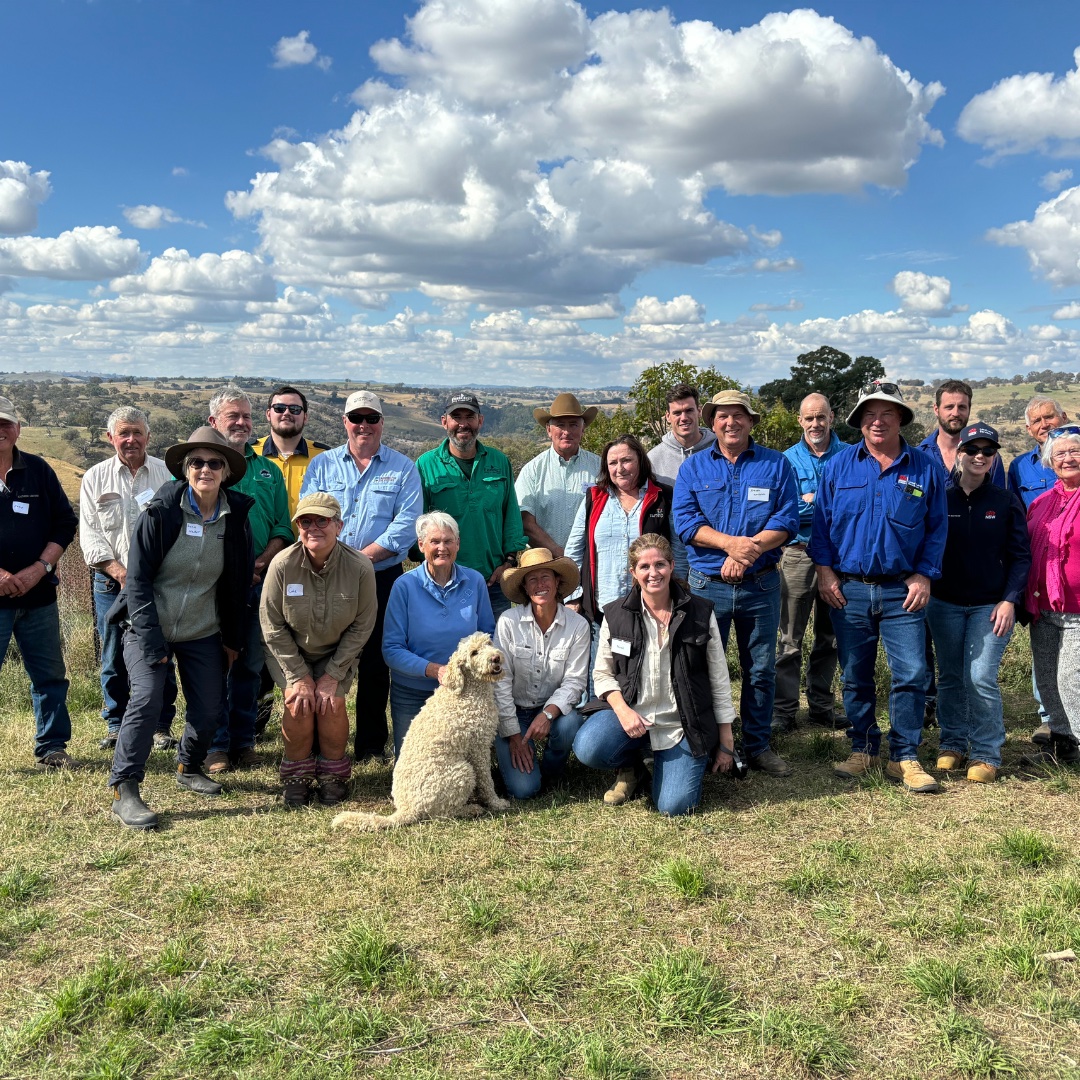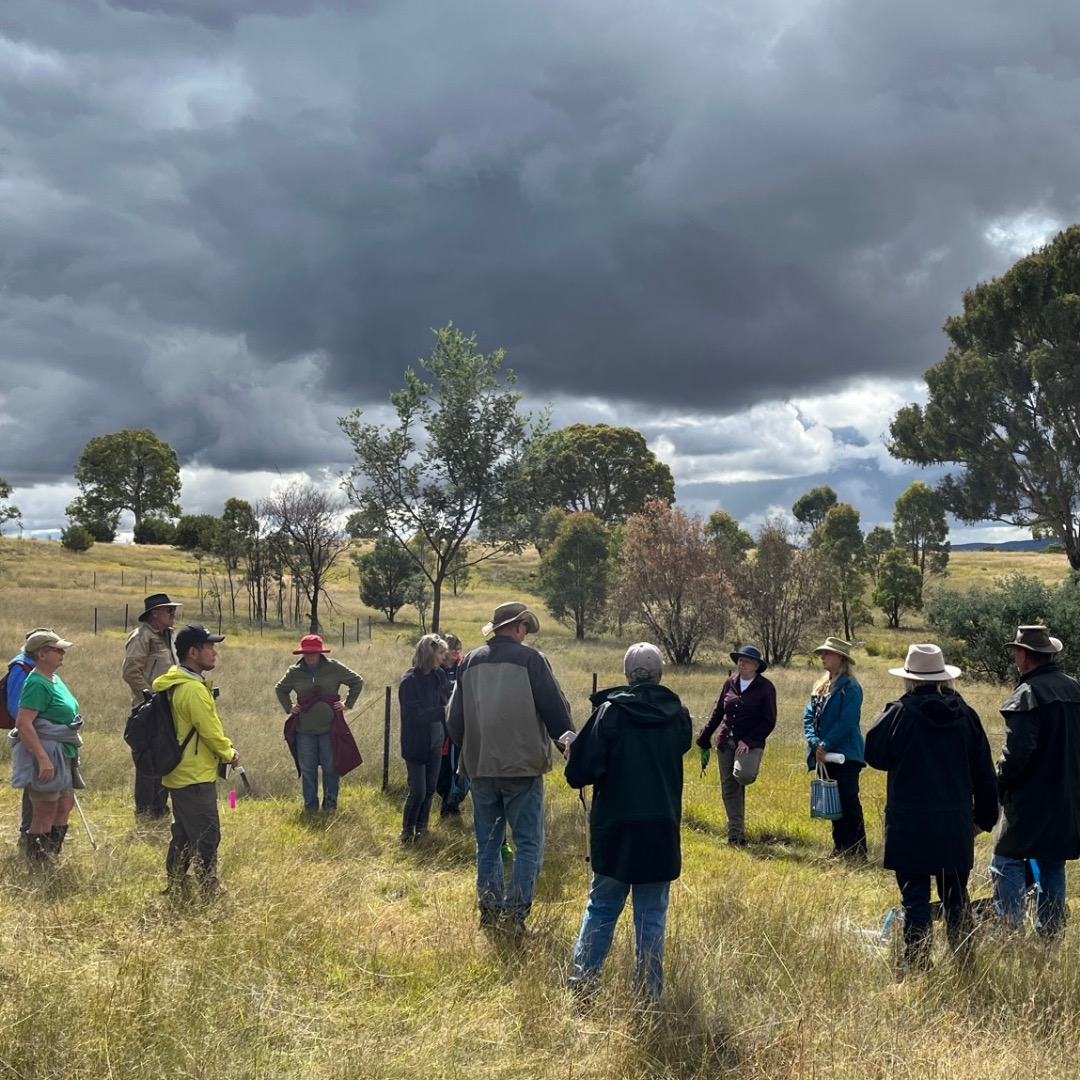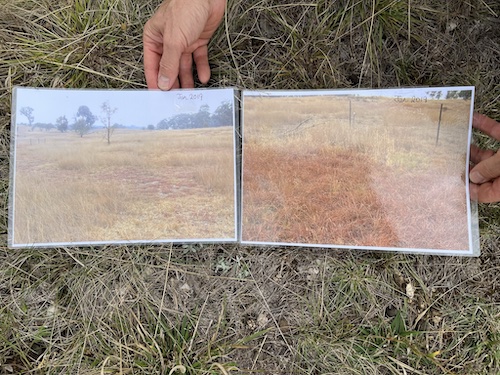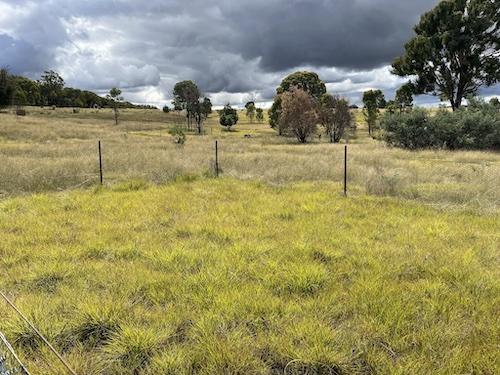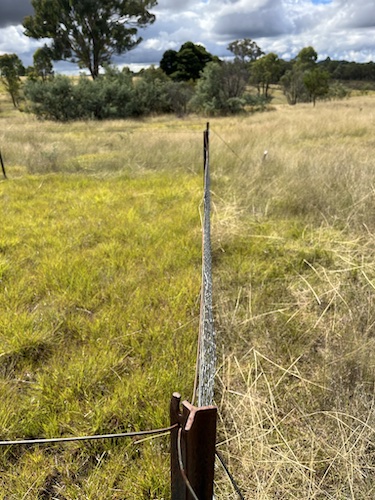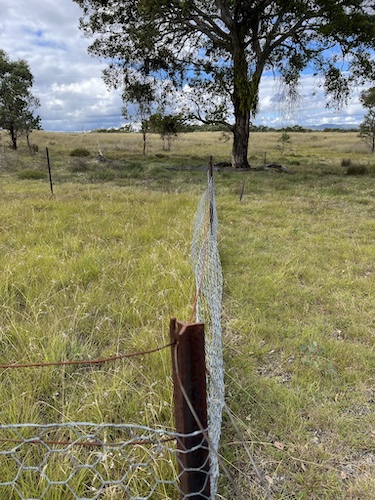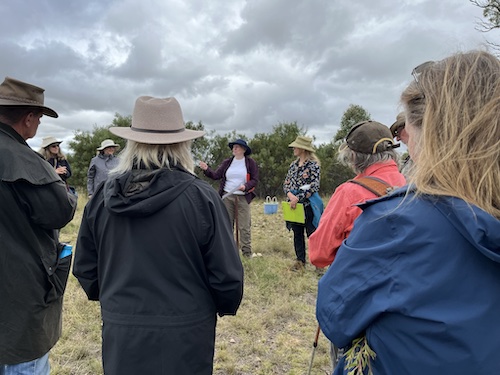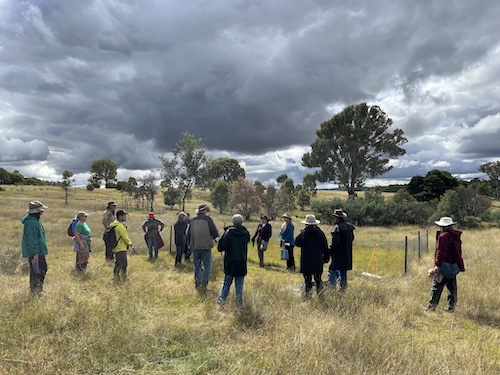Near Yass, graziers and landholders recently convened for the second Grazing for Tomorrow field day, a gathering aimed at equipping them with the tools to navigate the uncertainties that often impact agricultural enterprises. The South East Landcare event served as a platform for sharing insights, strategies, and innovations geared towards bolstering resilience in the face of natural events that can profoundly impact grazing businesses.


Keith McGrath, Billa Burra Burra, kicked off the proceedings by illuminating the transformations he's implemented in his grazing and breeding business. His approach, centred around building biodiversity in plants with a focus on grazing management, showcased tangible improvements in productivity. Participants witnessed firsthand the fruits of his labour, with ridge areas boasting robust ground cover, rendering them 'rain ready' and strategically fortified against erosion, supporting soil structure, health and water retention.

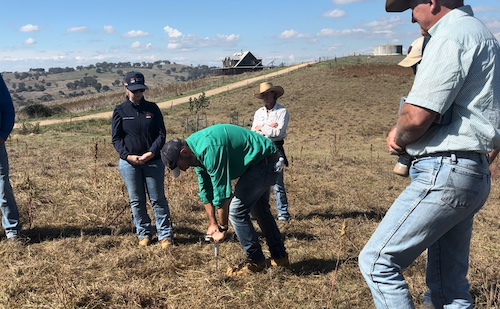
Sarah Clarry of Farmlink introduced the 'My Climate View' online climate tool, a valuable resource for farmers seeking to anticipate and adapt to shifting climatic patterns. By providing insights into key indicators like temperature fluctuations, Clarry empowered graziers to make informed decisions, from adjusting lambing schedules to fortifying infrastructure against extreme weather events.
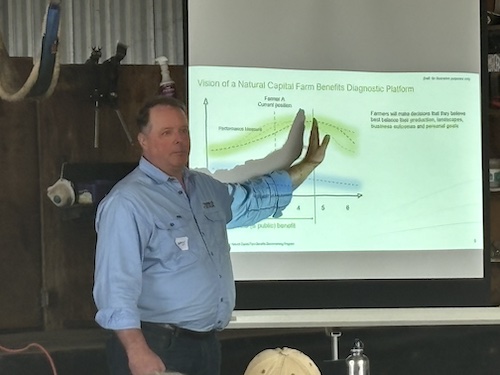

Danny O’Brien shed light on the Farming for the Future program, emphasising the importance of mapping and monitoring natural capital on farms. By leveraging data-driven insights, landholders can proactively align their actions with long-term sustainability goals, mitigating risks and maximizing productivity.

The Rural Fire Service underscored the imperative of preparedness in mitigating farm emergencies, offering practical strategies to enhance resilience. Local Land Services complemented these efforts by outlining available services and support systems, arming attendees with the knowledge and resources needed to safeguard their livelihoods.

Judy Carmody of the Rural Adversity Mental Health Program underscored the significance of mental well-being in agricultural communities. Through fostering a culture of support, resilience, and self-care, graziers were encouraged to prioritise mental health amidst the pressures of farm life. Practically; check on your mates and be aware of and manage your ‘stress bucket’.
The main lesson learned was the importance of working together to face uncertainties. As participants left with fresh ideas, they were ready to apply them to their own situations.
As the Yass event ends, excitement builds for the next Grazing for Tomorrow meeting in Bungonia on 17th May 2024. Each gathering is a source of resilience and new ideas, helping attendees plan for a stronger future in farming.
Writen by Sarah McGrath, YAN Local Coordinator
___________________
Landcare NSW’s People Led Prevention project empowers communities across regional NSW in developing disaster resilience and preparedness skills. Jointly funded by the Australian and NSW Governments.






